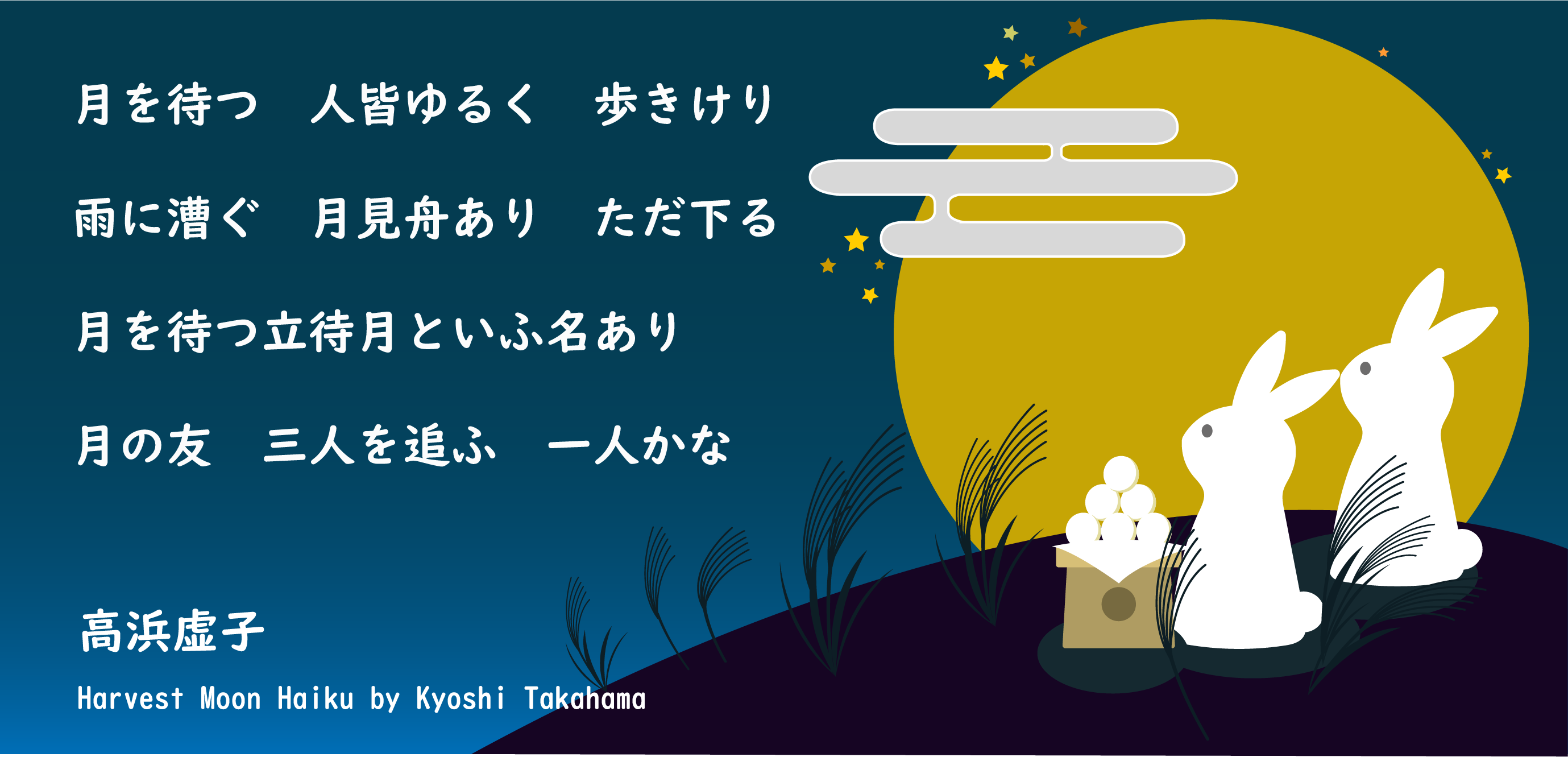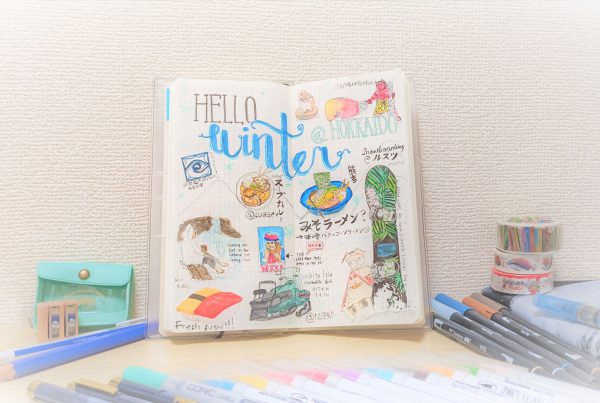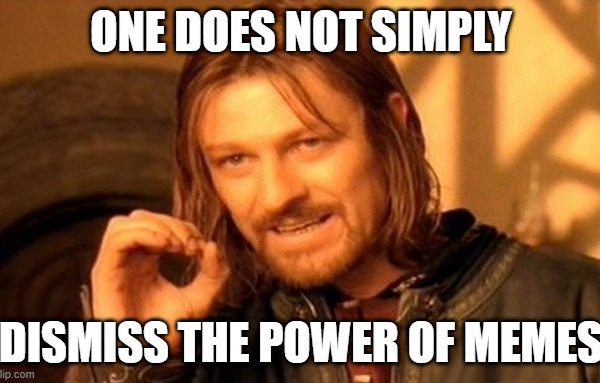World Bound by History - The Mid-Autumn Festival
A famous festival is celebrated yearly between September and October every year. Known as the Mid-Autumn Festival, it is celebrated by the Chinese community around the world and in other Asian countries such as Vietnam, Japan, and South Korea. Originating from China, the occasion is celebrated differently according to the unique local culture.
The Mid-Autumn Festival, also known as the “Mooncake Festival” or “Harvest Moon Festival” in some countries, falls on the 15th day of the 8th month of the Chinese lunar calendar. According to popular belief, one could see the harvest moon on the day of the Mid-Autumn Festival. Unfortunately, the dates do not usually coincide perfectly. But it is nearly accurate, as the harvest moon would appear within two days of the festival.
The Mid-Autumn Festival is the second largest festival in China, after the Lunar New Year celebration. People would gather with their family members for a meal during the festival. Sharing mooncakes with family members is also a common practice amongst the Chinese and the Chinese diaspora during the festival.
How does Japan celebrate this festival, and how does the Japanese culture affect the interpretation of the festival?
Mid-Autumn Festival in Japan
Known as O-Tsukimi (お月見、おつきみ), the Mid-Autumn Festival (Harvest Moon Festival) in Japan is literally known as “moon viewing”. Another name commonly used to describe the harvest moon event is “Chushu-no-meigetsu”.
Why ‘moon viewing’, you might wonder. The Japanese believe that ‘moon viewing’ is a way for people to show gratitude to the moon for the harvest, linking to Shintoism, the Japanese ancient belief system.
How do the Japanese celebrate this day?
A Short History
Introduced some 1,000 years ago during the Heian period, the day coincides with the 15th day of the 8th month in the lunar calendar. The moon viewing culture was adopted by the aristocrats. Only during the Edo period was the practice of ‘moon viewing’ spread to the common people.
Kyoto was the capital city during the Heian period. Known as “Heian-Kyo”, it was officially the capital of Japan for more than a thousand years.
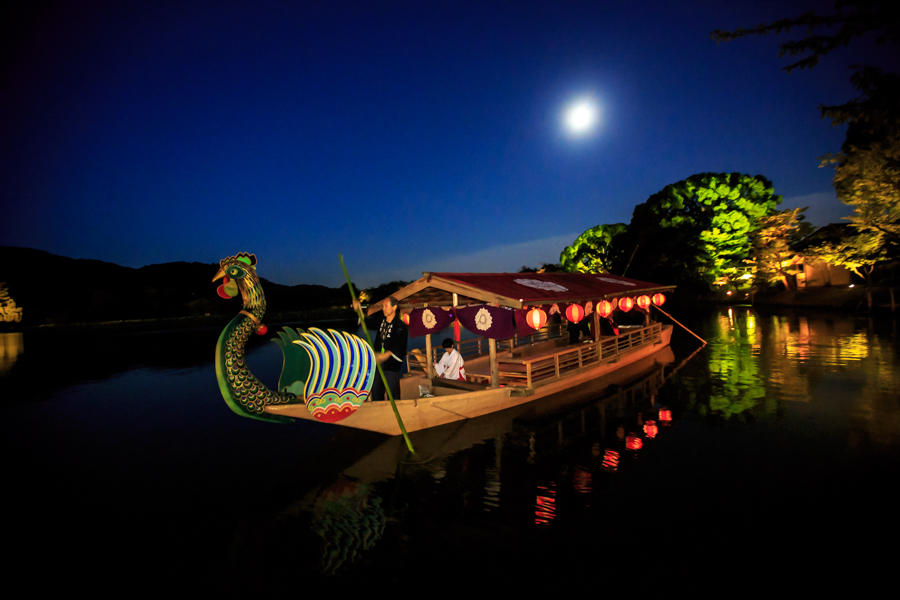
Ryutogekisu-bune (龍頭鷁首舟) at the famous Osawa pond in Kyoto, one of the three major moon viewing spots in Japan. Image via Pubnews.
It was said that the reflection of the moon provides stronger power in wish granting than a direct observation of the moon. During the Heian period, people would gather by the pond to enjoy the reflection of the moon on the surface of the pond. For others not within proximity to a pond would observe the moon from the reflection on a cup of tea or sake.
The Osawa Pond at Daikakuji Temple in Kyoto is the oldest spot created by Emperor Saga, imitating the Dongtian Lake in China. Till today, the Harvest Moon event is held at the temple. Rather unfortunately, due to the pandemic, the event will be closed to the public in 2021.
Moon Watching in Kyoto. Video by ANA Global Channel.
Representative Items for Moon Viewing
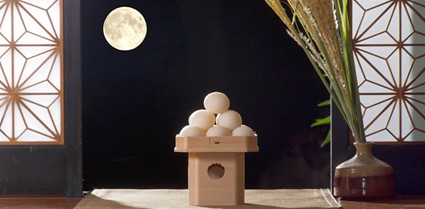
A typical setup for the Harvest Moon festiva. Image via Hibiya Kadan website.
You might have seen some images or decorations like what is shown in the picture above. Why are round rice cake dumplings (O-Tsukimi Dango) stacked in a pyramid, and what is the grass that is often featured in this event?
To the right are pampas grass, also known as Susuki (ススキ) in Japanese. Susuki has a hollow stem, believed to be the place God lives to protect the harvest from evil spirits while wishing for good harvest in the following year.
As seen in the picture above, round rice cake dumplings are stacked in the shape of a pyramid with hopes that the tip of the pyramid would lead people to the spiritual world in the sky. There are variations in Japan when it comes to rice cake dumplings. In some places, the 15th night is also called “Imo Meigetsu” (芋名月). In these areas, the people would offer dumplings as if they were harvested potatoes.
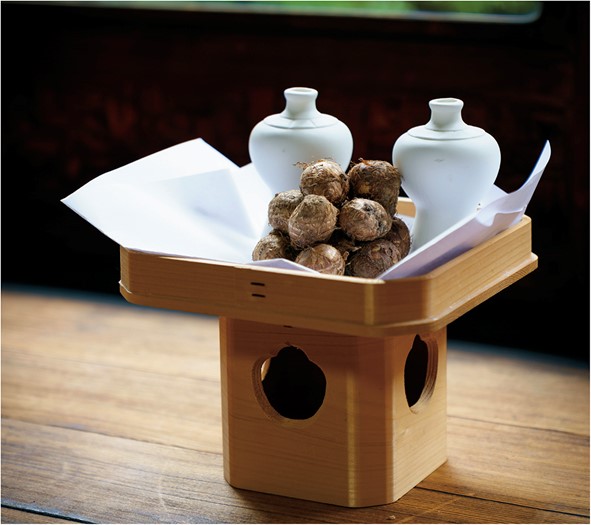
Imo Meigetsu offering with taro called sato-imo (里芋) at Tondaya, Kyoto.
Image via Ujitawara Teahouse Co.
Due to language difference, some Japanese words cannot be translated easily. In English, yam or taro do not fall into the category of “potatoes”. In Japanese, however, the word “imo” is a generic name (e.g. tuber) used to describe edible roots such as potatoes, yam, taro, and sweet potatoes.
Modernization of Culture
Making traditional sweets like rice cake dumplings take a long time. The action of pounding the rice to make mochi requires resources that are not readily available in the modern household. With the trend towards convenience, more companies are coming up with modern solutions to cater to the needs of the people.
Imo Meigetsu wagashi shaped into yam by Kaho Fukuoka. Image via Kaho Fukuoka website.
Confectionary produced in Shimanto city, Kochi prefecture for the “Potato Harvest Moon” Imo Meigetsu (芋名月). Image via Omiyadata.com website
Why Rabbit?
During the Harvest Moon Festival in Japan, rabbits are often featured on product packaging and even poster designs. So, why rabbits?
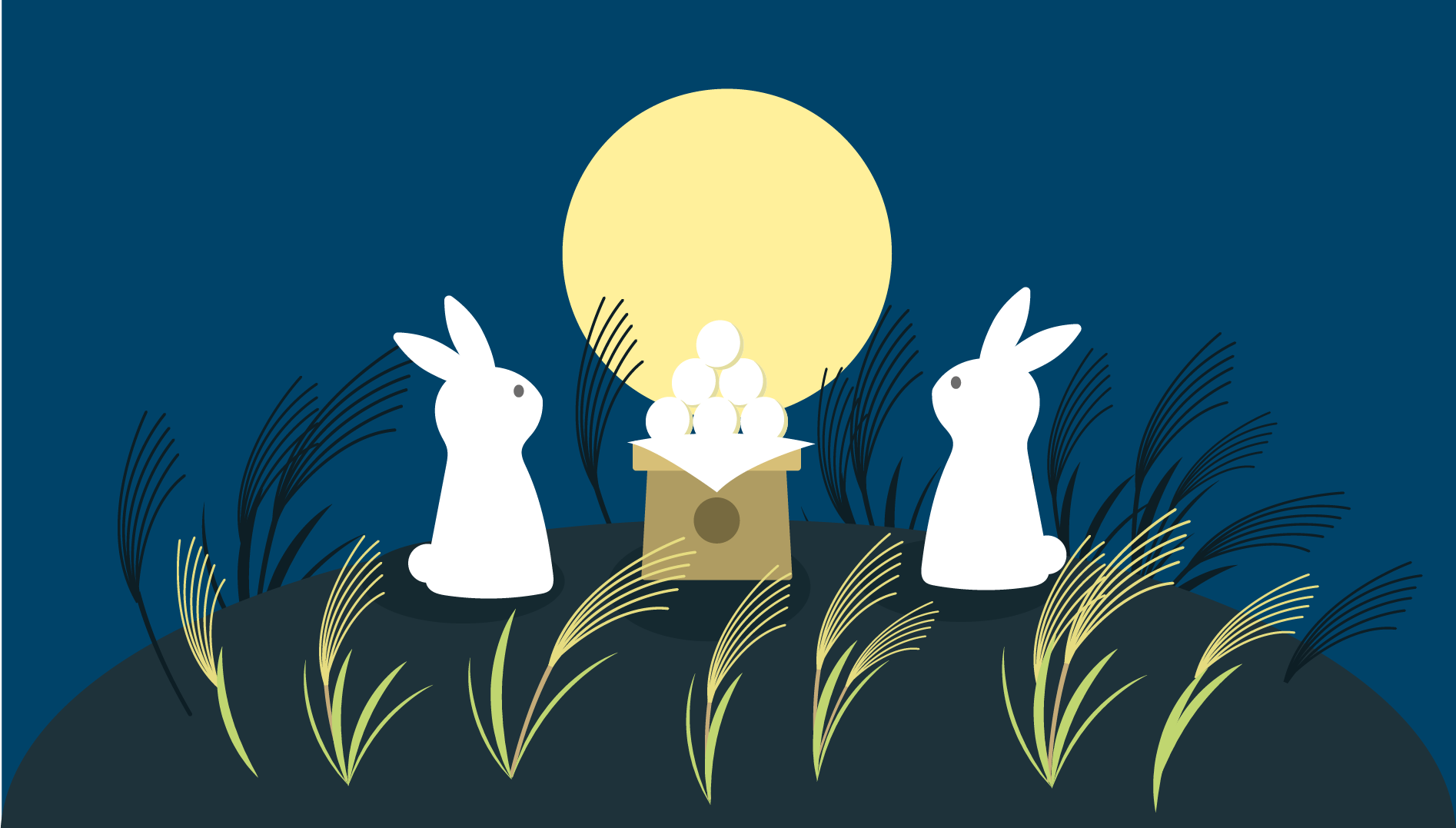
Rabbits are typically featured during the Harvest Moon festival. Image licensed from Adobe Stock.
A popular folklore has been passed on from generation to generation regarding the rabbit. This story is still being told to the children during the festival, making it an important feature during this time.
The Story
Once upon a time, there were three animals; the fox, the monkey and the rabbit. One day, they met a starving old men begging for food. All three animals went on a search for food. The fox went to the river and came back with fish. The monkey went to the forest to collect nuts. But the rabbit came back empty-handed despite doing his best.
In despair, the rabbit said “Please accept me as a sacrifice”, as he leapt into the fire to feed the hungry man.
The man, touched by the rabbit’s sincerity and sacrifice, peeled the burned skin off the rabbit and reflected it on the moon. And the rabbit came back to life.
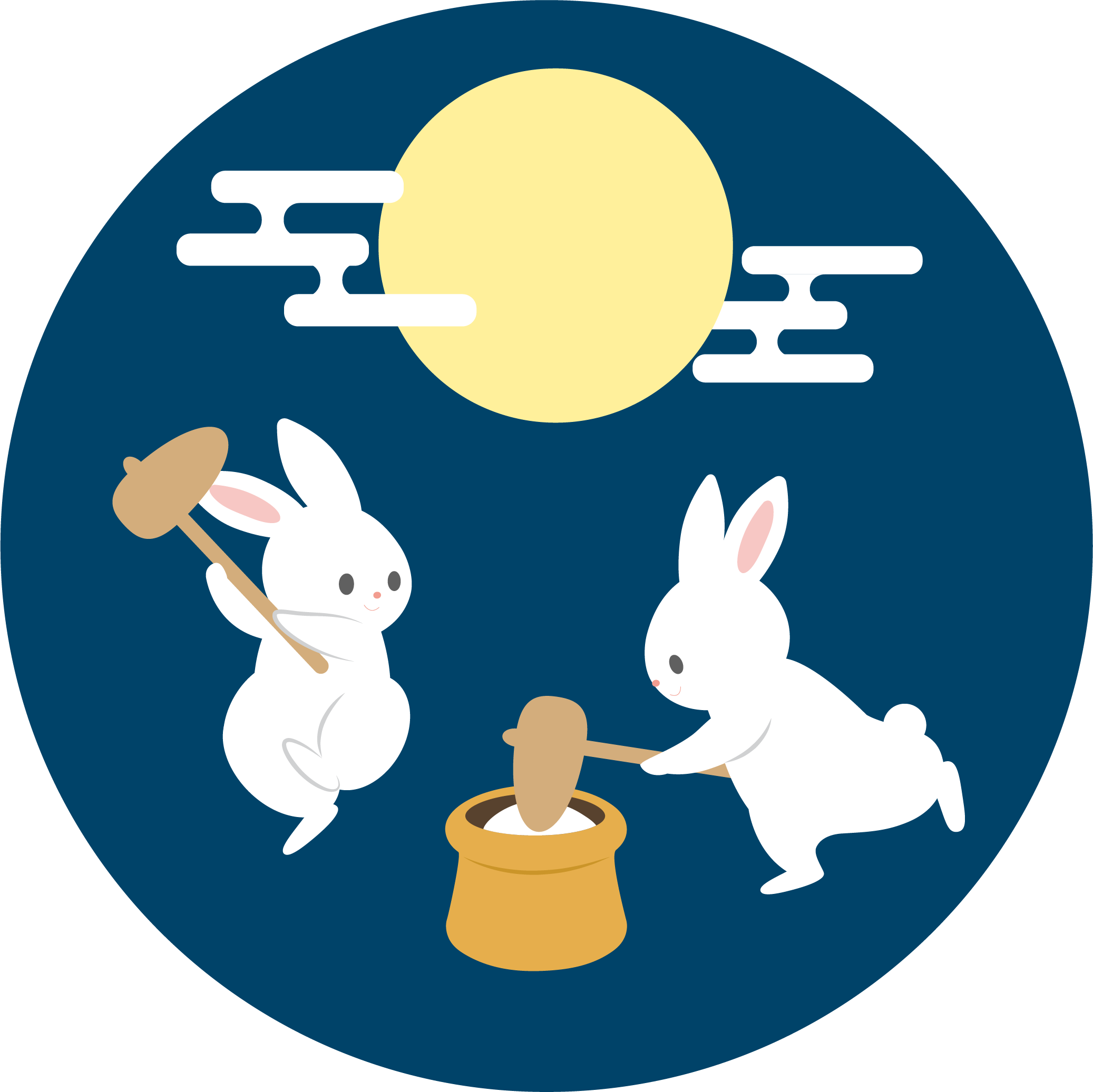
Rabbits pounding sticky rice (mochi) during the Harvest Moon. Image licensed from Adobe Stock.
There is a slightly different version that described the hungry man as a god in disguise. Pitying the rabbit, the god decided to revive the rabbit and place him on the moon to set an example for others.
It was said that the rabbits decided to make rice cakes to avoid the older people from having to experience hunger. It was also a way of showing gratitude for the abundance of rice received during the harvest.
Writing Haiku during the Mid-Autumn Festival
The practice of writing Haiku, a Japanese poem with 17 syllables in lines of 5, 7, and 5, started around the 17th century. Haikus traditionally evoke images of nature.
During the Harvest Moon Festival, it is said that there are 5 consecutive days that best inspire Haiku writers. Matsuyoi (待宵), the 14th day of the month; Meigetsu (名月), the 15th day; Tachimachi Tsuki (立待月), the 16th day; Imachi Tsuki (居待月), the 17th day; and Nemachi Tsuki (寝待月), the 18th day.
The 5 best days capture the essence of Japanese culture in an intricate manner, the way beauty is being perceived. The word “Wabi-sabi” comes to mind, reflecting the acceptance of transience and imperfections as a form of beauty. A haiku enthusiast shared his impression of the 5 inspirational days:
“On the 14th day of the Harvest Moon, the feeling of excitement about the days to come starts filling the hearts of people. On the day of the Harvest Moon, people celebrate in excitement. The day after, they stand and wait in anticipation for the rising moon that will appear a little later. Two days after, they sit in anticipation as the moon rises a little later than the day before. And finally, on the third day after, they lay down in anticipation of the rising moon that rises later than the day before.”
From this explanation, one can sense a slight hesitation in the atmosphere and how the Japanese views something “incomplete” (the different phases of the moon) as beautiful. Moreover, when one were to witness the Harvest Moon on a cloudy or rainy day, the expression of "Mugetsu" (夢月) is used to describe the lack of moon on the day of viewing.
